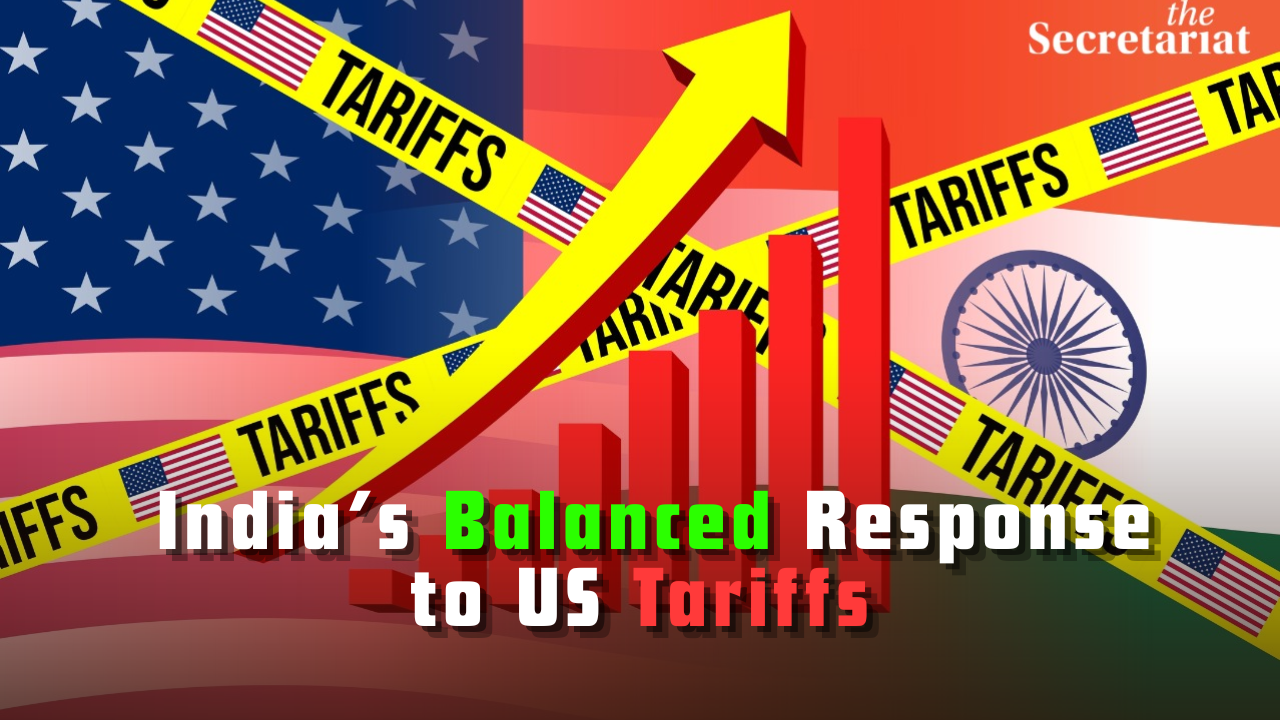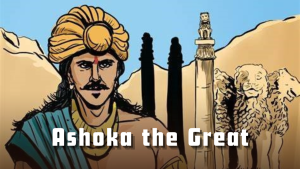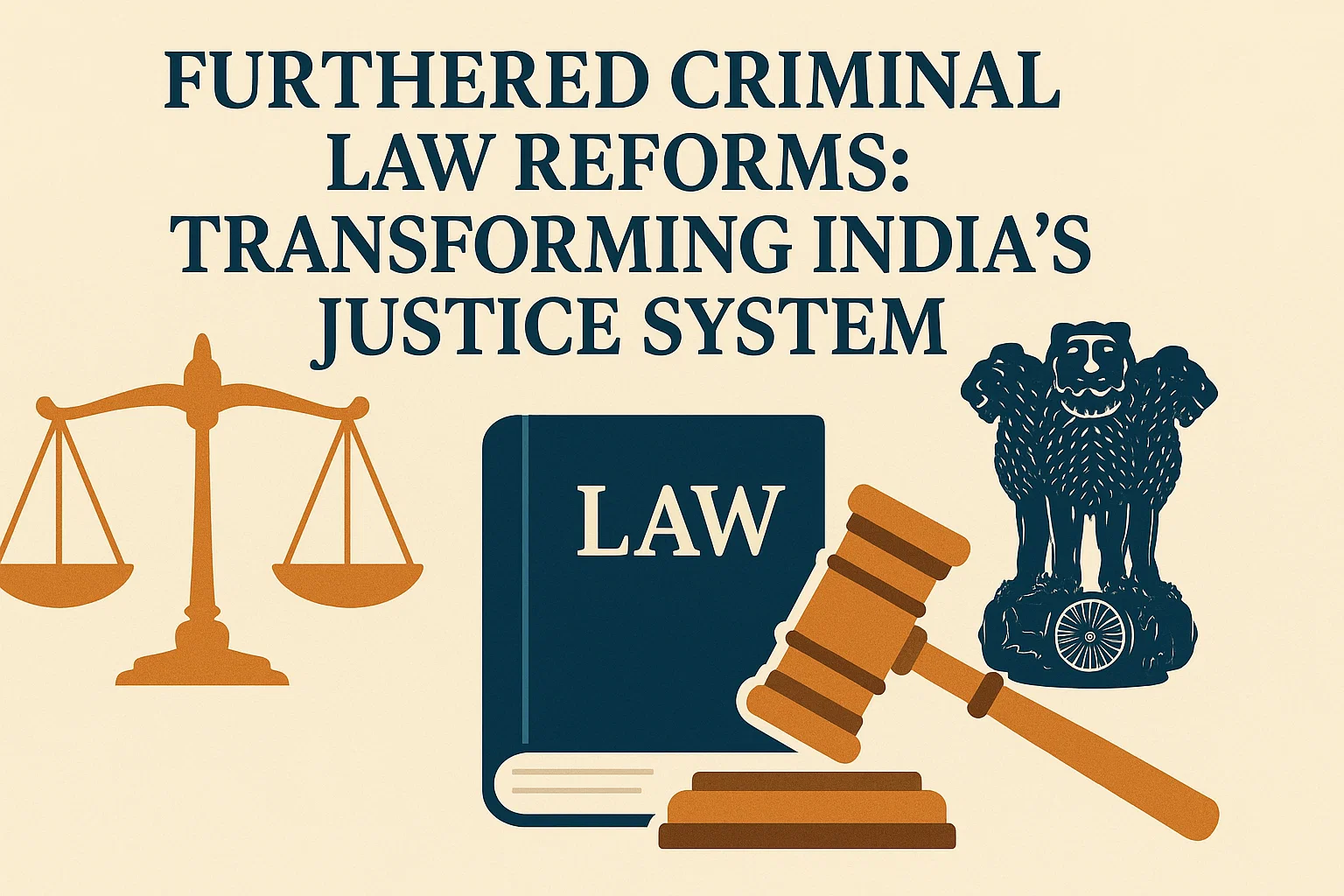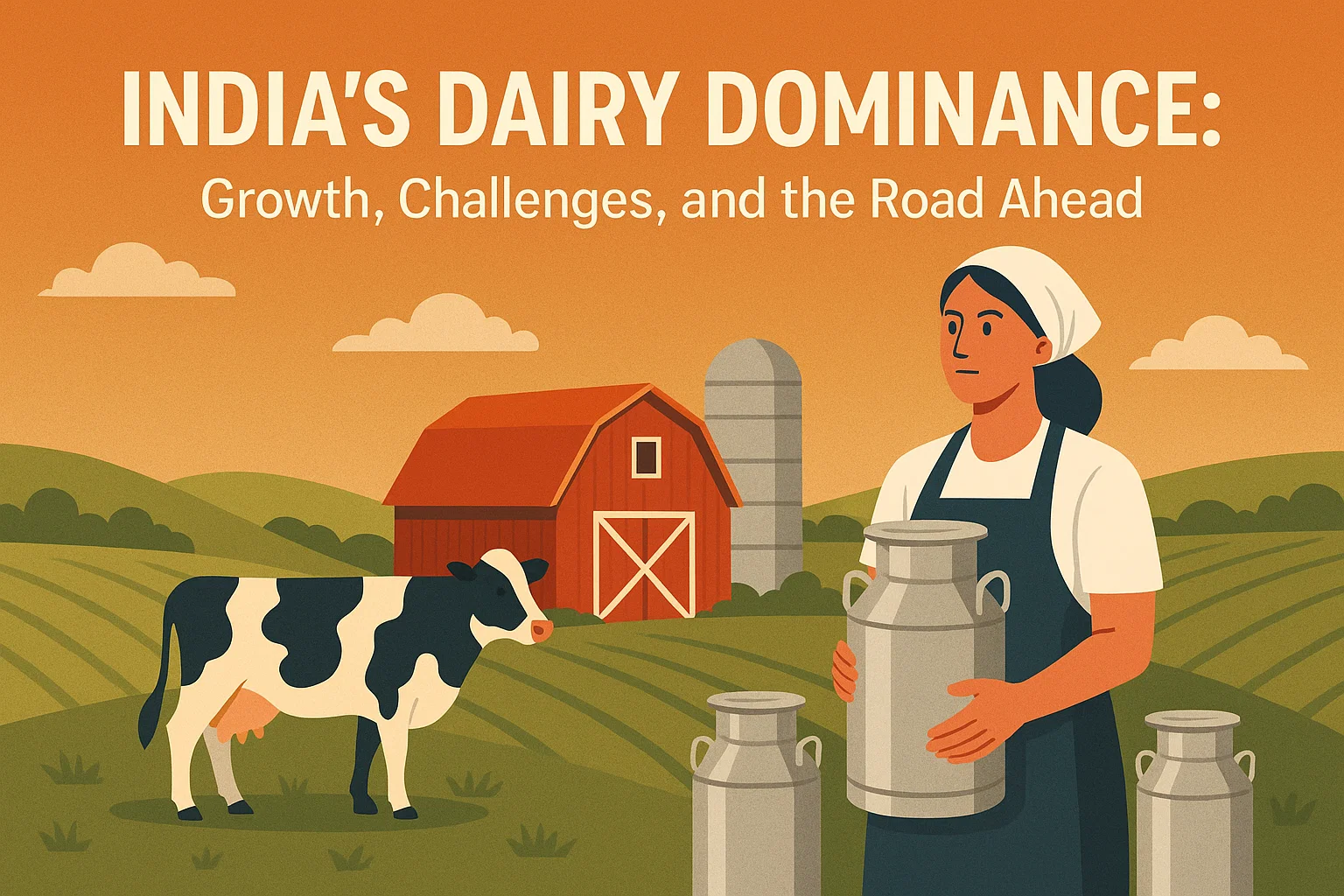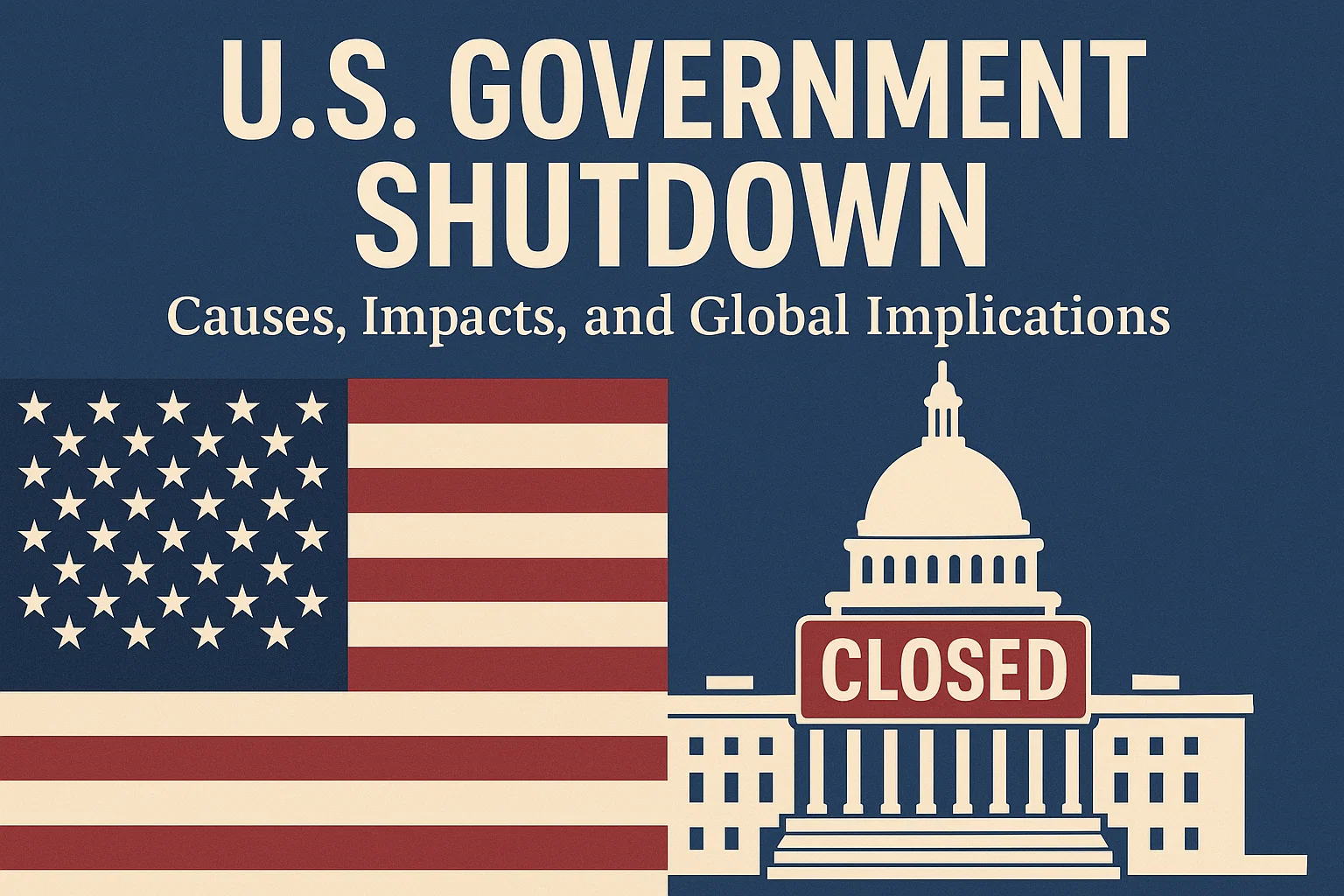India’s Balanced Response to US Tariffs
India’s strategy is to face US tariffs with strength, diplomacy, and global partnerships while protecting its interests and dignity.

Introduction: US Tariffs
Recently, the United States, one of India’s main trading partners, announced very high tariffs—extra taxes—on almost all Indian goods going to America. These tariffs have reached up to 50% on products like clothes, diamonds, and spices. This sudden move surprised many, including Manjeet Kripalani (“Russia is a Red Line for India”), Pankaj Saran (“A Bargain with the US on Tariffs is Still Possible”), and Rohit Lamba (“India Need Not Panic Over Tariffs”), who shared their views in The Indian Express on August 8, 2025. This has led to an important question: How should India respond?
This essay explores this challenge, present the main arguments by Indian thinkers and leaders, and explain why the best way forward is a balanced approach—one that defends India’s interests, builds economic strength, and stays open to fair partnerships.
Understanding the Problem: Why Did the Tariffs Happen?
Before discussing what India should do, it is important to know why this situation has come about. For many years, India and the United States have worked closely together on trade, technology, defence, and even climate change. America has been one of the biggest buyers of Indian goods, which has helped millions of Indian workers and businesses.
However, in recent times, things have changed. The United States, under President Donald Trump, has started putting up trade barriers not just against India, but also against other countries. The main reason for this tough action against India is that India continues to buy cheap oil from Russia, even as America and other Western countries try to punish Russia for its war in Ukraine. There are other issues too, like India’s strict rules on digital data storage and its refusal to buy certain American defence products.
As a result, America is using tariffs as a weapon to try to force India to change its policies. If India agrees, it may please the United States but hurt its own economy and security. If India refuses, it may face higher prices for exports and pressure on jobs at home. This is not just a test of business skills, but a test of India’s independence and confidence on the world stage.
Different Arguments: How Should India Respond?
Many Indian experts have strong opinions on how the country should respond. Three of the most respected voices are Manjeet Kripalani, Pankaj Saran, and Rohit Lamba. Let us look at each of their main points:
Manjeet Kripalani: Defend National Interests, Stand Firm
Manjeet Kripalani believes that India must draw a “red line” when it comes to its relationship with Russia. For her, Russia is not just a business partner, but a key part of India’s national security and economic health. Russia supplies India with affordable oil, which keeps costs down for businesses and families. Russia also provides important defence technology, such as advanced missiles, which help India stay safe in a difficult neighbourhood.
Kripalani argues that if India gives in to America’s demands, it could lose these benefits and look weak to other countries. She also points out that America has not always been a reliable friend—sometimes switching sides or changing policies overnight. For example, after India’s military operation against Pakistan, America was quick to patch up with Pakistan, leaving India feeling unsupported.
Her advice is simple: India should not panic or bend under pressure. If standing firm means taking an economic hit in the short run, so be it. In the long run, India can find new markets, make its own industries stronger, and prove to the world that it will not be bullied.
Pankaj Saran: Do Not Burn Bridges, Seek Diplomacy
Pankaj Saran’s approach is different. He agrees that the tariff decision is unfair and could hurt Indian workers. But he believes that the friendship between India and the United States is too valuable to throw away over a disagreement. India and America share important interests—security, technology, education, and people-to-people ties. This relationship has taken decades to build and should not be ended by a single argument.
Saran warns against overreacting. He says that trade arguments between countries are common, and India and the US have faced tough moments before. Each time, they have managed to solve their problems through talks and compromise. According to Saran, India should keep calm, work behind the scenes, and look for a bargain that protects its key interests but also keeps the door open for future cooperation.
He believes that a balance between defending national interests and showing flexibility in negotiations is the best way to maintain a positive relationship with America and keep India’s global image strong.
Rohit Lamba: Stay Calm, Be Strategic, and Reform
Rohit Lamba suggests a pragmatic and creative path. He says India should not panic or act out of anger. Instead, the country should treat this as a challenge to be solved with smart tactics.
Lamba recommends that India negotiates for specific exemptions on important products—like medicines, smartphones, and other goods that both Indian and American consumers rely on. He suggests working with American businesses that are hurt by the tariffs, because when American shops and companies lose out, they also want to see tariffs reduced.
He also says India should prepare its own list of possible tariffs on sensitive US goods (such as almonds or motorcycles) but only use them if necessary to pressure for a fair deal. At the same time, Lamba encourages India to take this opportunity to improve its economy at home—making industries more competitive, supporting small businesses, and reducing barriers to exports.
Most importantly, he urges India to look beyond America and start building stronger trade links with other countries, including in Africa, Southeast Asia, Europe, and the Middle East. By having more friends and partners, India can reduce its dependence on any single country and become more resilient to global shocks.
A Mix of All Three: The Case for a Balanced Approach
If we look at all the arguments, the best way forward for India is probably a mix of all three views. India should defend its own interests and never simply follow the wishes of another country, especially if doing so would hurt its economy or security. At the same time, India should avoid unnecessary confrontation and keep the door open for friendly talks, as the world is more connected than ever, and trade wars can have negative effects on everyone.
This means India must use this moment to strengthen its industries, protect workers, and become more competitive on the world stage. By finding new trade partners and working with other countries that face similar pressures, India can stand up for itself without becoming isolated.
Learning from Experience: The Importance of Mutual Respect
The problems India now faces with the United States did not appear overnight. As Barack Obama described in his powerful speech, the cracks in the relationship were growing for years. At first, America and India worked together as true partners, helping each other and sharing ideas. But slowly, the partnership began to feel less like a team and more like a list of demands.
India was told what to buy, when to buy, and on what terms. Every time India tried to explain its needs—like protecting its farmers, securing its digital data, or supporting small businesses—these worries were often ignored. Tariffs and threats became common tools in negotiations, and respect for India’s voice started to fade.
Eventually, India made a decision. It was not about anger or walking away forever. Instead, it was about drawing a line and saying that true partnerships must be built on respect, fairness, and listening—not just on power. India realised that no deal, no matter how profitable, was worth sacrificing the dignity and independence that are at the heart of its national identity.
Diversification: Building Strength at Home and Abroad
India’s answer to unfair pressure was not to close itself off, but to find new opportunities. The government and industry leaders started looking for new trading partners across Africa, Southeast Asia, and Europe. India made major investments in developing regions, building infrastructure, and working on innovation in technology, healthcare, and green energy.
By connecting more closely with countries like Vietnam, Indonesia, Kenya, and Brazil, India has been able to reduce its dependence on the United States. At the same time, India focus on building up its own industries at home—through “Make in India” and “Digital India” programmes have encouraged local production, supported new ideas, and helped India become a leader in areas like pharmaceuticals, electronics, and online services.
India also began to work more closely with other countries facing similar challenges. By shoring up coalitions with the African Union and the European Union, and even some American allies, India would be able to push for fairer global trade rules and have a stronger voice in negotiations.
Choosing Dignity Over Dependency
This strategy is not about isolating India or cutting ties with old friends. Instead, it is about ensuring that India’s choices are made at home and not dictated by outside pressure. India wants to work with everyone—but only on terms that are fair and respectful.
By insisting on mutual respect and fair treatment, India is setting a new standard for how international relations should work. India’s example shows that countries can defend their interests, stay open to dialogue, and still maintain good relations with the world. In fact, by choosing dignity over dependency, India has gained even more respect on the world stage.
As Obama noted, power today is not only about money or military might. It is also about the story you tell the world, and how you stand up for your values. India is showing that it will not accept being treated as a junior partner, and that its voice matters in global decisions.
Moving Forward: Turning Crisis into Opportunity
The tariff crisis, while difficult, is also a chance for India to make important changes. By using this moment to strengthen its economy, build new partnerships, and invest in technology and education, India can become even more competitive in the future.
India’s leaders must keep improving the business environment, help small companies grow, and support workers as they adapt to changing global trends. By doing so, India will not only weather this storm, but will emerge stronger and more self-reliant.
At the same time, India should continue to talk with the United States and other partners, looking for solutions that benefit both sides. Trade is not a zero-sum game—it can help everyone if it is based on fairness and respect. By keeping the door open for friendly talks, India can turn former arguments into new agreements.
Conclusion
India’s response to the US tariff challenge is a test of its confidence, values, and vision for the future. By choosing a balanced approach—one that combines self-defence, smart reform, and global cooperation—India can protect its interests while setting an example for others.
India must never allow itself to be bullied or treated as a minor player. It should always insist on respect, equality, and fairness in every partnership. At the same time, it must stay open to dialogue, make its industries stronger, and build friendships across the world.
In the end, India’s future does not depend on any single market or leader. It depends on the choices it makes for its own people—choices rooted in dignity, independence, and the pursuit of a better tomorrow. By staying true to these principles, India will not only survive the current storm, but will emerge as a leader in a more fair, connected, and hopeful world.
Subscribe to our Youtube Channel for more Valuable Content – TheStudyias
Download the App to Subscribe to our Courses – Thestudyias
The Source’s Authority and Ownership of the Article is Claimed By THE STUDY IAS BY MANIKANT SINGH
